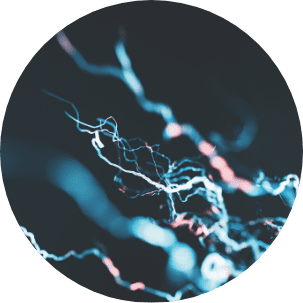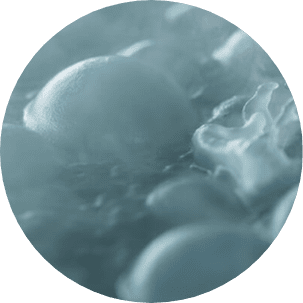Shingles, also known as herpes zoster, is a viral infection caused by the varicella-zoster virus (VZV), which is the same virus that causes chickenpox. After a person recovers from chickenpox, the virus remains dormant in the nerve cells near the spinal cord and can reactivate later in life, causing shingles. The primary symptom of shingles is a painful rash that typically appears as a strip or band on one side of the body, often wrapping around the torso. The rash usually consists of fluid-filled blisters that eventually crust over and heal within a few weeks. Along with the rash, individuals may experience other symptoms such as itching, tingling, or burning sensations, fever, headache, fatigue, and sensitivity to light. Shingles can be quite painful and uncomfortable, but most cases resolve on their own without any complications. However, in some cases, complications can arise, such as postherpetic neuralgia (persistent pain in the area affected by shingles) or secondary bacterial infections.
WHAT IS SHINGLES?
Shingles, also known as herpes zoster, is caused by the reactivation of the varicella zoster virus. After experiencing chickenpox or exposure to the varicella zoster virus, the virus stays dormant in the body for life. With age, the immune system naturally weakens, which may allow the usually inactive virus to reactivate, causing Shingles.
Hence, older people have an increased chance of getting Shingles. It typically produces a painful, blistering rash that appears on one side of the body or face.



WHAT YOU NEED TO KNOW ABOUT SHINGLES
The varicella zoster virus is responsible for chickenpox (also known as herpes zoster). After a person has chickenpox, the virus stays in their body and becomes inactive. The virus can become active again years later and cause Shingles. Scientists aren’t exactly sure what causes the virus to become active again. However, there may be multiple factors. A persons immune system weakens as they age. The more the immune system weakens, the less likely it is to prevent the virus from reactivating. Hence, older people are more at risk from Shingles.
Firstly, anyone who has had chickenpox already has the virus that can cause Shingles. Some people have had chickenpox and don’t remember it or might not have realised it. Either way, they can develop Shingles if the virus reactivates, despite how healthy they may feel.
People with low immunity are at a higher risk of developing Shingles. And since the immune system naturally weakens over time with age, people are at a higher risk after age 50.
Older adults are also at increased risk of having complications such as Post-herpetic Neuralgia (PHN).
The virus that causes Shingles is already present in the body from when you are infected with chickenpox. It goes dormant until reactivated. Hence, you cannot pass it on to another.
However, it could infect another if they haven’t had chickenpox or arent protected against it. The virus could be transmitted if the person comes into direct contact with the blisters of someone with Shingles to develop chickenpox.
Shingles typically produces a painful rash that often blisters, and scabs over in 10 to 15 days and clears up within 2 to 4 weeks. It usually appears on one side of the body or face. 48-72 hours before the rash appears, people may experience pain, itching, tingling, or numbness in the area where the rash will develop.
There is a possibility that stress can increase your risk of Shingles. That said, age is the most important factor for developing Shingles. Most of the Shingles cases occur in adults 50 years and older.
Please speak with your doctor to know more.
Chickenpox is a very contagious disease that causes a blister-like rash typically all over the body, itching, and fever. The chickenpox virus can reactivate, causing Shingles. People with Shingles may have pain, itching, tingling, and blisters in one area of the body that can last for weeks.
You cannot develop Shingles if you’ve never had chickenpox. However, there is a chance that you might have been exposed to the virus unknowingly, or you may not remember being exposed to it. In such a scenario, you may be at risk of developing Shingles.
Herpes zoster ophthalmicus is a Shingles infection that affects the eye and the ocular area. Symptoms include forehead rash and painful inflammation of all the tissues.
WHAT ARE THE SYMPTOMS OF SHINGLES
Shingles typically produces a painful and blistering rash, erupting in a stripe of blisters that wraps around either the left or right side of the torso, along a nerve path. It can develop on the torso, arms, thighs, or head (including in the eyes or ears). People often describe the pain as aching#, burning#, stabbing#, or shock-like#. It may interfere with everyday activities, like getting dressed, walking, and sleeping.
WHAT INFECTION FEELS LIKE
People can also experience fever, headache, chills or upset stomach.
So, if you are experiencing any of these symptoms, please talk to a doctor quickly.



Shingles Prevention Options
Shingles is caused by the reactivation of the virus that remains in the body after chickenpox. So, if a person hasn’t had chickenpox, ask them to avoid contact with people who have chickenpox or Shingles. Also, ensure that they follow all hand and cough hygiene to reduce the risk of developing chickenpox.
Vaccination may help prevent Shingles. Talk to your doctor to know more about Shingles and its Prevention.
Vaccination boosts your bodys immune system so it can fight off the Shingles virus and keep it from reactivating.
Treatment may reduce the severity and duration of illness and depending on your symptoms may include weakening the virus and/or pain relief.
If you think your elders may have Shingles, please speak with your doctor immediately for appropriate treatment to help reduce the severity and duration of your symptoms.
General advice for managing symptoms:
- Keep the rash clean and dry to reduce the risk of infection
- Wear loose-fitting clothing
- Use a cool compress a few times a day
People with the following conditions should not get the Shingles vaccination:
- Have encountered an extreme allergic reaction due to any.
- Have encountered an extreme allergic reaction due to any component of the vaccine or the dose.
- Women who are pregnant.
- Suffering from any type of illness and fever before getting the vaccination.
Most people get Shingles once in a lifetime, but it is even possible to get infected more than once.
Please speak with your doctor to know more.
Speak to a doctor to know more about Shingles and its prevention.

ARE YOU AT RISK? CONSULT DOCTOR FOR FREE*
Charges for Online doctor consultation is Rs. 700.00.
However, if you take both the shots of the vaccine from us, as a special offer, your consultation charges will be adjusted with the vaccine price.
Get vaccinated against Shingles today. Our vaccinator will arrange the home service for your convenience.
Avail No Cost EMI options !! Talk to us now for details.
Fill Your Details Below
DISCLAIMER
# Individual patient symptoms of Shingles may vary. These statements are based on some patient’s description of their shingles pain and do not represent every patient’s experience.
Disclaimer: Issued in public interest by GlaxoSmithKline Pharmaceuticals Limited. Dr. Annie Besant Road, Worli, Mumbai 400 030, India. Information appearing in this material is for general awareness only. Nothing contained in this material constitutes medical advice. The doctor if any shown in this material is for illustration purpose only and is a professional model. Please consult your physician for medical queries, if any, or any question or concern you may have regarding your condition. Please consult your Doctor for the complete list of Vaccine-preventable diseases and the complete vaccination schedule for each disease.
Please report adverse events with any GSK product to the company at india.pharmacovigilance@gsk.com. CL code: NP-IN-HZU-WCNT-230003, DoP: Feb 2023

